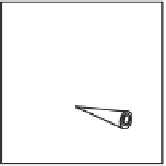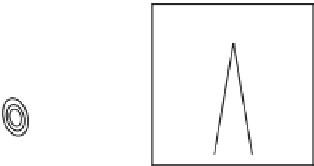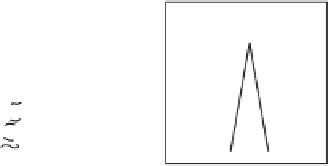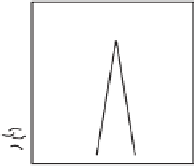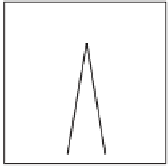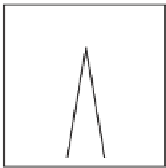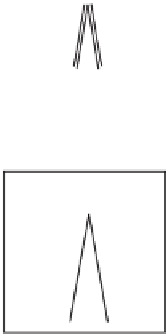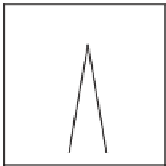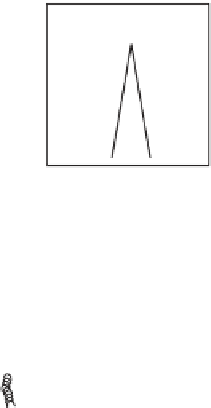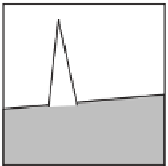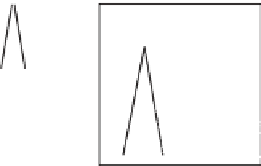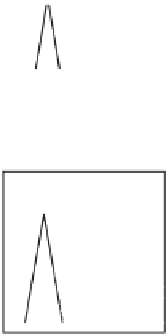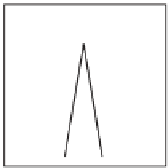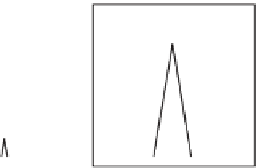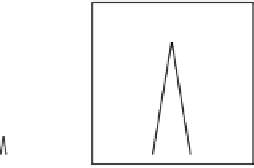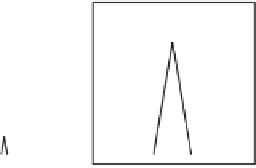Geology Reference
In-Depth Information
(a) Parasequence 1 - sea level rise
V1
V2
V3
V4
V5
V6
(b) Parasequence 1 - sea level fall
V1
V2
V3
V4
V5
V6
(c) Parasequence 2 - sea level rise
V1
V2a
V3a
V4a
V5a
V6
V2b
V3b
V4b
V5b
V5c
Fig. 10.
Parasequence development of the Atar reefs. (a) Parasequences initiate upon sea level rise with the nucleation and
growth of
Conophyton
(V1-V6). (b) During sea level fall, accretion of cones is halted (V1) and cones are subject to erosion
or toppling (V2), partial burial by interstromatolitic material (stromatolitic debris or detrital microspar; V3), or develop-
ment of lowstand phase stromatolites, including adjacent bioherms of Tilemsina (V4), concentric branches of
Jacutophyton
sahariensis
. (V5), or restricted growth of irregular columnar branches (
Baicalia
or
Tilemsina
; V6). (c) Subsequent sea level
rises, of suffi cient magnitude to place the substrate beneath wave base, results in reinitiation of coniform growth atop
previous upright or toppled
Conophyton
or
Jacutophyton
(V1-V5a), nucleation of new
Conophyton
(V3b-V4b), and devel-
opment of
Conophyton
from branching elements of
Jacutophyton
(V5b). If, during subsequent sea level rises, the substrate
remains within wave base, stromatolite growth is marked by development of irregular branching columns of
Tilemsina
and
Baicalia
(V6, V2b, V5c).
material, branching can develop at the tops of
living cones (Fig. 10b, V6). During subsequent
sea-level rise, branching can develop into new
cones, or into biostromes of irregularly branching
columns depending on the hydrodynamic state
of the environment. In the Atar Formation, this
scenario is observed in the formation of
Tilemsina
on cone tops in the R1 and R2 biostromes
(Fig. 7b), in the appearance of branches on
Conophyton jacqueti
in the R3 biostrome
